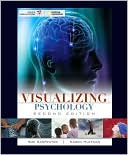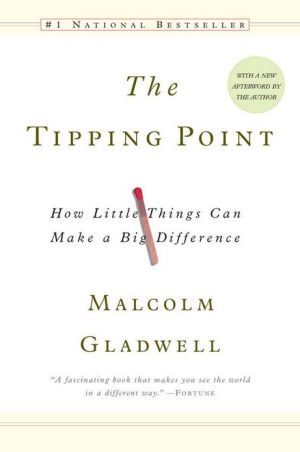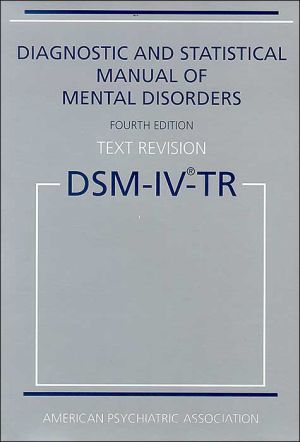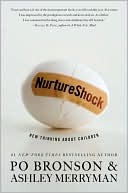Visualizing Psychology
Search in google:
This text provides a new, visually-oriented look into the field of psychology. Rather than offering an encyclopedic printed text, Visualizing Psychology presents a straightforward, logically intuitive approach to the subject. With the help of illustrations and graphics, the book brings complex concepts to life. Huffman also uses a user-friendly approach to engage the reader.
Introduction and Research Methods 2Introducing Psychology 4What Is Psychology? 4Origins of Psychology 6A Brief History: Psychology's Intellectual Roots 6What a Scientist Sees: The Biopsychosocial Model 10Women and Minorities in Psychology 11The Science of Psychology 12The Scientific Method: A Way of Discovering 12Ethical Guidelines: Protecting the Rights of Others 12Research Methods 15Experimental Research: A Search for Cause and Effect 16Descriptive Research: Naturalistic Observation, Surveys, and Case Studies 18Correlational Research: Looking for Relationships 20Biological Research: Tools for Exploring the Brain and Nervous System 20Getting the Most from Your Study of Psychology 24Familiarization 24Active Reading 24Visual Learning 24With Your Own Eyes: Improving Your Grade 26Time Management 26Distributed Study 27Overlearning 27Neuroscience and Biological Foundations 32Our Genetic Inheritance 34Behavioral Genetics: Is It Nature or Nurture? 34Evolutionary Psychology: Darwin Explains Behavior and Mental Processes 36Neural Bases of Behavior 37How Do Neurons Communicate? 38What a Scientist Sees: How Poisons and Drugs Affect Our Brain 41Hormones: A Global Communication System 42Nervous System Organization 44Central Nervous System (CNS): The Brain and Spinal Cord 44With Your Own Eyes: Infant Reflexes 47Peripheral Nervous System (PNS): Connecting the CNS to the Rest of the Body 47What a Scientist Sees: Sexual Arousal 49A Tour Through the Brain 50Lower-Level Brain Structures: The Hindbrain, Midbrain, and Parts of the Forebrain 50The Cerebral Cortex: The Center of "Higher" Processing 53Two Brains in One? A House Divided 55Stress and Health Psychology 62Understanding Stress 64Sources of Stress 64How Stress Affects the Body 66Stress and Illness 69Cancer: A Variety of Causes-Even Stress 69Cardiovascular Disorders: The Leading Cause of Death in the United States 69What a Scientist Sees: Type A Personality and Hostility 71Post-Traumatic Stress Disorder (PTSD): A Disease of Modern Times? 72Gastric Ulcers: Are They Caused by Stress? 72Health Psychology in Action 74Tobacco: Hazardous to Your Health 74Alcohol: A Personal and Social Health Problem 76With Your Own Eyes: Do You Have an Alcohol Problem? 77Chronic Pain: An Ongoing Threat to Health 77Health and Stress Management 78Coping with Stress 78Resources for Healthy Living: From Good Health to Money 80Sensation and Perception 86Understanding Sensation 88Processing: Detection and Conversion 88Adaptation: Weakening the Response 89How We See and Hear 91Waves of Light and Sound 91Vision: The Eyes Have It 92Hearing: A Sound Sensation 92Our Other Senses 96Smell and Taste: Sensing Chemicals 96The Body Senses: More than Just Touch 97Understanding Perception 99Selection: Extracting Important Messages 99With Your Own Eyes: Illusions 99Organization: Form, Constancy, Depth, and Color 101What a Scientist Sees: Perceptual Constancies 104With Your Own Eyes: Color Aftereffects 106Interpretation: Explaining Our Perceptions 106States of Consciousness 114Consciousness, Sleep, and Dreaming 116With Your Own Eyes: Are You Sleep Deprived? 119Stages of Sleep: How Scientists Study Sleep 119Sleep Disorders: When Sleep Becomes a Problem 123Psychoactive Drugs 126Psychoactive Drugs: Four Categories 129Altering Consciousness Through Meditation and Hypnosis 133Meditation: A Healthy "High" 133What a Scientist Sees: Meditation and the Brain 134Hypnosis: Uses and Myths 135Learning 142Classical Conditioning 144The Beginnings of Classical Conditioning 144Fine-Tuning Classical Conditioning 146Operant Conditioning 149The Beginnings of Operant Conditioning 149Reinforcement: Strengthening a Response 150What a Scientist Sees: Partial Reinforcement Keeps 'em Coming Back 152Punishment: Weakening a Response 153Cognitive-Social Learning 156Insight and Latent Learning: Where Are the Reinforcers? 156Observational Learning: What We See Is What We Do 158The Biology of Learning 160Neuroscience and Learning: The Adaptive Brain 160Evolution and Learning: Biological Preparedness and Instinctive Drift 161Conditioning and Learning in Everyday Life 163Classical Conditioning: From Prejudice to Phobias 163With Your Own Eyes: Classical Conditioning as a Marketing Tool 164Operant Conditioning: Prejudice, Biofeedback, and Superstition 164Cognitive-Social Learning: We See, We Do? 166Memory 172The Nature of Memory 174Four Models of Memory: An Overview 174Sensory Memory 176Short-Term Memory 177What a Scientist Sees: Chunking in Chess 177Long-Term Memory 179Improving Long-Term Memory: Organization, Rehearsal, Retrieval 180Biological Bases of Memory 182Neuronal and Synaptic Changes in Memory 182Hormonal Changes and Memory 183Where Are Memories Located? 183Biological Causes of Memory Loss: Injury and Disease 184Forgetting 186Theories of Forgetting 186Factors Involved in Forgetting 188Memory Distortions 189With Your Own Eyes: A Memory Test 190Memory and Eyewitness Testimony 191Repressed Memories 192With Your Own Eyes: Tips for Memory Improvement 193Thinking, Language, and Intelligence 198Thinking 200The Thinking Brain: Making Connections 200Cognitive Building Blocks 200Solving Problems 202Barriers to Problem Solving 202Creativity: Finding Unique Solutions 204With Your Own Eyes: Are You Creative? 204Language 206What Is Language? 206Language and Thought: A Complex Interaction 206Language Development: From Crying to Talking 207Can Humans Talk to Nonhuman Animals? 209Intelligence 211Do We Have One or Many Intelligences? 211Measuring Intelligence? 213The Intelligence Controversy 216Extremes in Intelligence: Mental Retardation and Giftedness 216The Brain's Influence on Intelligence 217Genetic and Environmental Influences on Intelligence 218What a Scientist Sees: Family Studies of Intelligence 218Ethnicity and Intelligence: Are IQ Tests Culturally Biased? 219Life Span Development I 226Studying Development 228Theoretical Issues: Ongoing Debates 228Research Methods: Two Basic Approaches 230Physical Development 232Prenatal and Early Childhood: A Time of Rapid Change 232What a Scientist Sees: How an Infant Perceives the World 237Adolescence and Adulthood: A Time of Both Dramatic and Gradual Change 238Cognitive Development 242Stages of Cognitive Development: Birth to Adolescence 243With Your Own Eyes: Putting Piaget to the Test 246Assessing Piaget's Theory: Criticisms and Contributions 248Life Span Development II 254Social, Moral, and Personality Development 256Social Development: The Importance of Attachment 256What a Scientist Sees: Attachment: The Power of Touch 257Moral Development: Kohlberg's Stages 260Personality Development: Erikson's Psychosocial Theory 264How Sex, Gender, and Culture Affect Development 266Sex and Gender Influences on Development 266Cultural Influences on Development 270Developmental Challenges Through Adulthood 272Committed Relationships: Overcoming Unrealistic Expectations 272With Your Own Eyes: Are Your Relationship Expectations Realistic? 273Work and Retirement: How They Affect Us? 274Death and Dying: Our Final Developmental Crisis 276Motivation and Emotion 282Theories and Concepts of Motivation 284Biological Theories: Looking for Internal "Whys" of Behavior 284With Your Own Eyes: Sensation Seeking 286Psychosocial Theories: Incentives and Cognitions 287Biopsychosocial Theories: Interactionism Once Again 287Motivation and Behavior 289Hunger and Eating: Multiple Factors 289Achievement: The Need for Success 293Sexuality: The World's Most Powerful Motive? 294Intrinsic versus Extrinsic Motivation: Is One Better than the Other? 296Theories and Concepts of Emotion 298Three Components of Emotion 298Four Major Theories of Emotion 300Culture, Evolution, and Emotion 304What a Scientist Sees: Polygraph testing 306Personality 312Trait Theories 314Early Trait Theorists 314The Five-Factor Model: Five Basic Personality Traits 314With Your Own Eyes: Love and the "Big Five" 316Evaluating Trait Theories 317Psychoanalytic/Psychodynamic Theories 318Freud's Psychoanalytic Theory: The Power of the Unconscious 318Neo-Freudian/Psychodynamic Theories: Revising Freud's Ideas 322Evaluating Psychoanalytic Theories: Criticisms and Enduring Influence 324Humanistic Theories 325Roger's Theory: The Importance of the Self 325What a Scientist Sees: Congruence, Mental Health, and Self-Esteem 325Maslow's Theory: The Search for Self-Actualization 326Evaluating Humanistic Theories: Three Major Criticisms 327Social-Cognitive Theories 328Bandura's and Rotter's Approaches: Social Learning Plus Cognitive Processes 328Evaluating Social-Cognitive Theory: The Pluses and Minuses 329Biological Theories 330Three Major Contributors to Personality: The Brain, Neurochemistry, and Genetics 330The Biopsychosocial Model: Pulling the Perspectives Together 331Personality Assessment 332Interviews and Observation 332Objective Tests 332Projective Tests 334Are Personality Measurements Accurate? 334Psychological Disorders 340Studying Psychological Disorders 342Identifying Abnormal Behavior: Four Basic Standards 342Explaining Abnormality: From Superstition to Science 342Classifying Abnormal Behavior: The Diagnostic and Statistical Manual IV-TR 344What a Scientist Sees: Seven Psychological Perspectives on Abnormal Behavior 345Anxiety Disorders 348Four Major Anxiety Disorders: The Problem of Fear 348Causes of Anxiety Disorders 350Mood Disorders 352Understanding Mood Disorders Major Depressive Disorder and Bipolar Disorder 352Causes of Mood Disorders: Biological versus Psychosocial Factors 353Schizophrenia 354Symptoms of Schizophrenia: Five Areas of Disturbance 354Types of Schizophrenia: Recent Methods of Classification 356Causes of Schizophrenia: Nature and Nurture Theories 356Other Disorders 359Substance-Related Disorders 359Dissociative Disorders: When the Personality Splits Apart 360Personality Disorders: Antisocial and Borderline 360How Gender and Culture Affect Abnormal Behavior 362Gender and Depression: Why Are Women More Depressed? 363Culture and Schizophrenia: Differences Around the World 364Avoiding Ethnocentrism 364Therapy 372Insight Therapies 374Psychoanalysis/Psychodynamic Therapies: Unlocking the Secrets of the Unconscious 374Cognitive Therapies: A Focus on Faulty Thoughts and Beliefs 376Humanistic Therapies: Blocked Personal Growth 378With Your Own Eyes: Client-Centered Therapy in Action 380Group, Family, and Marital Therapies: Healing Interpersonal Relationships 381Behavior Therapies 383Classical Conditioning Techniques 383Operant Conditioning Techniques 384Observational Learning Techniques 384Evaluating Behavior Therapies 386Biomedical Therapies 386Psychopharmacology: Treating Psychological Disorders with Drugs 387Electroconvulsive Therapy and Psychosurgery 388What a Scientist Sees: Electroconvulsive therapy (ECT) 389Evaluating Biomedical Therapies 389Therapy Essentials 391Therapy Goals and Effectiveness 391Cultural Issues in Therapy 392Women and Therapy 393Institutionalization 394Social Psychology 400Our Thoughts about Others 402Attribution: Explaining Behavior 402Attitudes: Learned Predispositions toward Others 403Our Feelings about Others 405Prejudice and Discrimination 405Interpersonal Attraction 408What a Scientist Sees: Love Over the Life Span 410Our Actions toward Others 411Social Influence: Conformity and Obedience 411What a Scientist Sees: What Influences Obedience? 414Group Processes 416Aggression 419Altruism: Helping Others 420Applying Social Psychology to Social Problems 422Reducing Prejudice and Discrimination 422Overcoming Destructive Obedience: When Is It Okay to Say No? 423Statistics and PsychologyAnswers to Self-TestsGlossaryReferencesCreditsName IndexSubject Index








